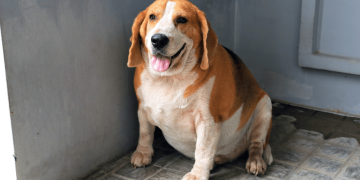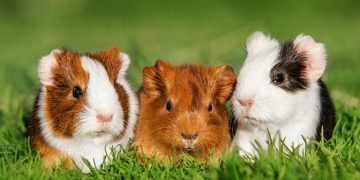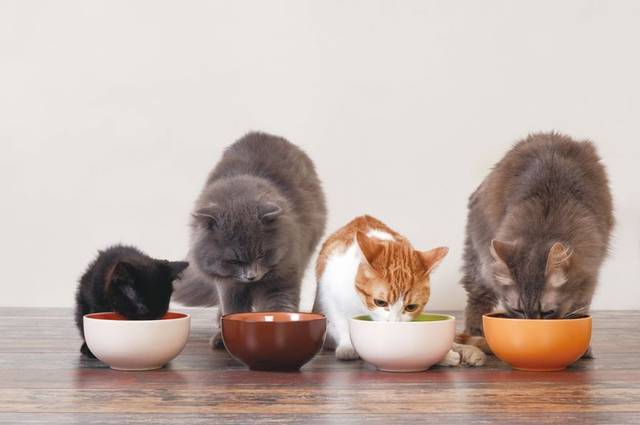Introduction:
As pet owners, providing the best nutrition for our pets is one of the most important aspects of ensuring their overall health and well-being. The pet food market offers a wide variety of choices, and two types that have gained significant popularity in recent years are freeze-dried food and regular dry food. Both options promise to provide pets with a balanced diet, but they differ greatly in terms of processing, nutritional content, and ease of use.
Understanding the nutritional needs of pets at different life stages—from puppies and kittens to adult and senior pets—can help pet owners make more informed decisions about which type of food is most appropriate. In this article, we will explore the differences between freeze-dried food and regular dry food and evaluate which option best meets the nutritional needs of pets at different ages.
1. Understanding Freeze-Dried Food and Regular Dry Food
Before diving into the specifics of nutritional needs, it’s important to understand the basic characteristics of freeze-dried food and regular dry food.
a. Freeze-Dried Food
Freeze-dried food is a type of pet food that has undergone a process called freeze-drying, which involves removing the moisture from the food while preserving its nutritional value. Freeze-dried food typically contains raw ingredients such as meat, vegetables, and fruits, and it is usually available in both raw and cooked varieties. This process helps retain the natural flavors and nutrients of the ingredients without the need for preservatives or artificial additives.
- Pros: Freeze-dried food tends to be highly nutritious, with a high protein content derived from quality meat sources. It also maintains many of the natural enzymes and vitamins that can be lost during conventional cooking.
- Cons: Freeze-dried food can be more expensive than regular dry food and may require rehydration with water to make it more palatable or easier to digest.
b. Regular Dry Food (Kibble)
Regular dry food, commonly known as kibble, is the most widely used type of pet food. It is typically made by combining various ingredients such as meat, grains, vegetables, and vitamins, which are then processed using high heat and pressure to form dry pellets. This cooking process helps extend the shelf life of the food without the need for refrigeration.
- Pros: Dry food is convenient, easy to store, and often more affordable compared to freeze-dried food. It is also available in a wide range of formulations to suit different life stages and health conditions.
- Cons: The high heat processing used in kibble production can lead to a loss of certain nutrients, such as enzymes and some vitamins. Additionally, some kibble brands may include lower-quality ingredients like fillers and artificial additives.
2. Nutritional Needs of Pets at Different Life Stages
Pets have different nutritional requirements at various stages of their lives, and it is important to tailor their diet accordingly. Puppies and kittens have specific dietary needs for growth, while adult pets need food that supports their energy levels and maintains optimal health. Senior pets, on the other hand, may require food that promotes joint health, weight management, and digestion.
a. Puppies and Kittens
During their early stages of life, puppies and kittens require high-quality, nutrient-dense food to support rapid growth and development. Both freeze-dried and regular dry food can meet the nutritional needs of young pets, but there are important differences to consider.
- Freeze-Dried Food for Puppies and Kittens: Freeze-dried food often contains higher levels of protein and fat, which are essential for the growth of puppies and kittens. The raw ingredients used in freeze-dried food may also be easier for young pets to digest. However, freeze-dried food can be more expensive, and some pets may not be accustomed to the texture unless it’s rehydrated.
- Regular Dry Food for Puppies and Kittens: Regular dry food is typically formulated with the right balance of protein, fat, and carbohydrates for growing pets. It is also available in age-specific formulas that promote healthy development. Kibble can help keep teeth clean due to its crunchy texture, which can be beneficial for young pets’ dental health.
Best Choice for Puppies and Kittens: Both freeze-dried and regular dry food can be suitable for puppies and kittens, but freeze-dried food may be more beneficial for those who require higher protein and fat content, while regular dry food offers more affordability and convenience.
b. Adult Pets
As pets reach adulthood, their nutritional needs shift from supporting rapid growth to maintaining energy levels and overall health. Adult pets require a balanced diet that supports their activity levels and keeps them at a healthy weight.
- Freeze-Dried Food for Adult Pets: Freeze-dried food offers a nutrient-dense, high-protein option for adult pets. It is an excellent choice for active pets or those that require a higher level of protein, such as working dogs or athletic breeds. Additionally, freeze-dried food often contains fewer preservatives and additives, making it an attractive choice for pet owners who prefer a more natural diet.
- Regular Dry Food for Adult Pets: Kibble for adult pets is widely available in various formulations tailored to different breeds, activity levels, and health concerns. It can be a more affordable and convenient option compared to freeze-dried food, while still providing the necessary nutrients. Some dry foods also come with added ingredients to promote joint health, skin health, or digestive health.
Best Choice for Adult Pets: Both options can meet the nutritional needs of adult pets, but if your pet requires higher protein or has specific dietary preferences, freeze-dried food may be more suitable. Regular dry food, on the other hand, is a more affordable and practical choice for many adult pets.
c. Senior Pets
As pets age, they may begin to experience a decrease in metabolism, joint problems, and other health issues. Senior pets need food that supports their specific needs, such as maintaining a healthy weight, promoting joint health, and ensuring proper digestion.
- Freeze-Dried Food for Senior Pets: Many freeze-dried foods are rich in high-quality proteins and omega fatty acids, which can benefit senior pets’ joints, skin, and coat. The natural ingredients in freeze-dried food can also be easier for older pets to digest. Additionally, some freeze-dried foods are available in formulas designed for senior pets, which include ingredients that promote joint health and support aging bodies.
- Regular Dry Food for Senior Pets: Senior pet formulas of kibble are typically lower in calories and fat to help manage weight. They also contain added nutrients, such as glucosamine and chondroitin, which support joint health. Many senior dry foods are enriched with fiber to aid digestion and promote healthy bowel movements. However, the high heat used in processing kibble can result in the loss of some nutrients over time.
Best Choice for Senior Pets: Freeze-dried food is often the better option for senior pets due to its high protein content and ease of digestion, especially if your senior pet has specific health concerns. Regular dry food, however, can also be suitable if you choose a high-quality senior formula with added joint support ingredients.

3. Considerations for Choosing the Right Food
While freeze-dried food and regular dry food both have their benefits, the right choice for your pet depends on several factors, including their age, health, and lifestyle. Here are some important considerations to keep in mind when choosing between the two options:
a. Price and Budget
Freeze-dried food is generally more expensive than regular dry food due to its processing methods and higher-quality ingredients. If cost is a significant factor, regular dry food may be more budget-friendly, especially for larger pets or those that eat a lot.
b. Convenience
Regular dry food is much easier to store and serve than freeze-dried food, which may require rehydration before feeding. If you’re looking for a convenient option that requires minimal preparation, regular dry food is the better choice.
c. Health Considerations
If your pet has specific health concerns, such as food sensitivities or digestive issues, freeze-dried food may be a more natural, easy-to-digest option. However, it’s important to choose high-quality freeze-dried food that is specifically formulated for your pet’s age and health needs.
d. Storage and Freshness
Freeze-dried food has a longer shelf life compared to regular dry food, but it may require refrigeration or sealing to maintain freshness once opened. Dry food, on the other hand, is easier to store for long periods without refrigeration.
4. Conclusion
Both freeze-dried food and regular dry food can be suitable options for pets at various life stages, but the choice largely depends on your pet’s specific needs and your personal preferences. Freeze-dried food offers a more natural, nutrient-dense option with higher protein and fewer preservatives, making it an excellent choice for puppies, active adults, and senior pets with specific health needs. Regular dry food, while more affordable and convenient, can still provide balanced nutrition for most pets, especially when choosing high-quality formulations.
Ultimately, the best approach is to evaluate your pet’s age, activity level, health, and any special dietary requirements before deciding which type of food will best support their long-term health and happiness. Consulting with your veterinarian can also provide valuable guidance in choosing the right food to meet your pet’s unique nutritional needs.























































